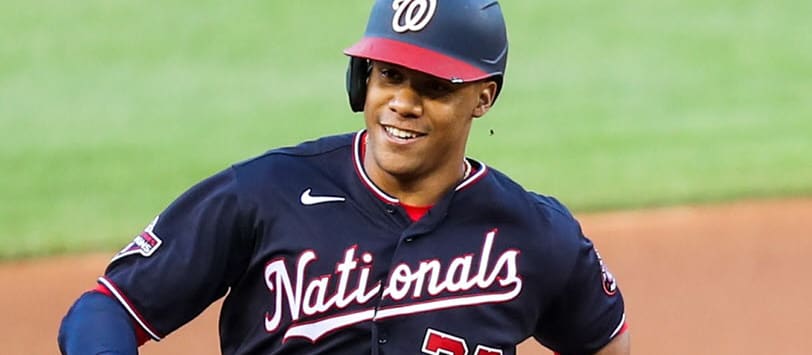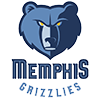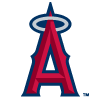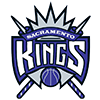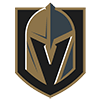I've officially caught the Olympic fever. There's nothing quite like spending the day flipping from swimming to handball to skateboarding to field hockey to cycling to water polo, watching the absolute best in the world showcase their skills at sports you'd forgotten existed until just moments before.
While the return of baseball to the Olympics doesn't quite scratch that same itch (as I've actually watched quite a bit of baseball since the last time I watched a handball game back in 2016, which may or may not be apparent from my articles), I'm still thrilled to have my favorite sport back in its rightful place on the world stage. It's unfortunate that MLB doesn't pause its season the way other top leagues do, robbing us of the chance to see the true best players in the world compete for Olympic gold as they do in most other sports, but I'm sure the tournament will be a great time.
I hope you'll stick with me for an extended introduction this week as I give a quick breakdown of all six teams, though if you're only here for the MLB content, feel free to skip to the Risers section below. The tournament format is a bit of an odd one. The six teams are split into two groups of three and will play the other two teams in the group stage. No team is eliminated in that stage, but the winners of each group will get byes to the next stage, which
I've officially caught the Olympic fever. There's nothing quite like spending the day flipping from swimming to handball to skateboarding to field hockey to cycling to water polo, watching the absolute best in the world showcase their skills at sports you'd forgotten existed until just moments before.
While the return of baseball to the Olympics doesn't quite scratch that same itch (as I've actually watched quite a bit of baseball since the last time I watched a handball game back in 2016, which may or may not be apparent from my articles), I'm still thrilled to have my favorite sport back in its rightful place on the world stage. It's unfortunate that MLB doesn't pause its season the way other top leagues do, robbing us of the chance to see the true best players in the world compete for Olympic gold as they do in most other sports, but I'm sure the tournament will be a great time.
I hope you'll stick with me for an extended introduction this week as I give a quick breakdown of all six teams, though if you're only here for the MLB content, feel free to skip to the Risers section below. The tournament format is a bit of an odd one. The six teams are split into two groups of three and will play the other two teams in the group stage. No team is eliminated in that stage, but the winners of each group will get byes to the next stage, which is a double-elimination tournament.
Group A
Japan
DraftKings Sportsbook Gold Medal Odds: +160
World Ranking: 1
Players based in: NPB (24)
Japan has never won Olympic gold in baseball, but they're rightly considered the favorites here. While Japan will be without a handful of notable names (including Shohei Ohtani and Yu Darvish) do to their inclusion on MLB rosters, most of the country's top talent plays in NPB, the second-best league in the world and therefore the best league that paused play for this tournament. The host nation brings a true NPB All-Star team in their pursuit of the gold medal.
Japan's pitching could carry the country to victory. Masahiro Tanaka will be the name American fans are most familiar with, as he's eligible to play after surprisingly leaving MLB to head back home over the offseason. He's cruised to a 2.82 ERA, but he might not be the best pitcher on the staff. We unfortunately won't get to see Tomoyuki Sugano, who looked close to a move stateside last winter, as he withdrew due to injury, but there are other talents who could make their way to MLB eventually on this roster. Twenty-two-year-old righty Yoshinobu Yamamoto (1.82 ERA, 27.2 percent strikeout rate) is perhaps the most notable, while Kodai Senga has been limited to just two starts this season but owns a 2.77 career ERA over parts of 10 NPB campaigns and is expected to try to make the jump in a few years once his team (the four-time defending champion Fukuoka SoftBank Hawks) can no longer block the move.
Japan's lineup is loaded as well. Veteran middle infielders Hayato Sakamoto and Tetsuto Yamada each have an MVP trophy to their name, while outfielder Yuki Yanagita has two. Fellow outfielder Seiya Suzuki, who could potentially be posted this winter, is in the middle of his sixth straight .300/.400/.500 season, while Masataka Yoshida is in his fifth straight season crossing those marks and is on his way to his third straight Pacific League batting title. Meanwhile, the team also features young firepower in the form of 21-year-old corner infielder Munetaka Murakami, who already has 91 career NPB homers.
Mexico
DraftKings Sportsbook Gold Medal Odds: +500
World Ranking: 5
Players based in: LMB (17), Triple-A (5), Double-A (1), High-A (1)
Like Japan, the top Mexican players play at the MLB level, so Mexico will be without players such as Alex Verdugo and Julio Urias. The Mexican Baseball League (LMB) did not pause play for the Olympics but did allow players to attend, so this team will contain many players from that league as well as a few who play in Asia or are in affiliated ball but not on 40-man rosters.
Oliver Perez is probably the best-known name on the pitching side. The 39-year-old made five scoreless relief appearances at the MLB level back in April but now plays for Toros de Tijuana in his native country. Manny Banuelos and Teddy Stankiewicz both recently moved to Mexico following successful stints in Taiwan and could be key arms for the team, especially as Hector Velazquez, who owns a 3.90 ERA in 166 MLB frames, had to withdraw due to a positive COVID-19 test.
The Mexican lineup features a handful of former MLB players, the most notable of which is easily Adrian Gonzalez. He has 2,050 hits and 317 homers at the highest level, and while he's clearly diminished at age 39, he does have a .943 OPS in 43 games for Mariachis de Guadalajara. Veteran utility infielders Danny Espinosa and Ryan Goins, who have 997 MLB hits between them, should also be key pieces.
Dominican Republic
DraftKings Sportsbook Gold Medal Odds: +550
World Ranking: 7
Players based in: Free Agent (8), Triple-A (5), Double-A (3), LMB (2), NPB (2), Atlantic League (1), High-A (1), Retired (1)
If players on 40-man rosters were allowed to attend the Olympics, the Dominican Republic would likely be one of the favorites of the tournament. As with the United States, however, the vast majority of the Domincan Republic's top talent won't be here. We're left instead with a large number of nonprospect minor-leaguers and a few players playing overseas. That latter group includes veterans who have plenty of experience at the MLB level but are well past their prime like Jose Bautista (who last played professionally in 2018) and Melky Cabrera. The main draw here, however, is Mariners' prospect Julio Rodriguez, who's eligible as he's not yet on the team's 40-man roster. He's one of the top prospects in all of baseball and has a .967 OPS at the High-A and Double-A levels this season.
There's not a lot of depth here, however, given that the largest group of players on this squad are free agents who only play professionally during the country's strong winter league (LIDOM). The pitching looks particularly weak, with Angel Sanchez and Cristopher Mercedes, a pair of NPB starters, looking like perhaps the most important arms. It's fair to consider this team a clear underdog despite the Dominican Republic's reputation as a strong baseball country.
Group B
South Korea
DraftKings Sportsbook Gold Medal Odds: +310
World Ranking: 3
Players based in: KBO (24)
South Korea is in much the same situation as Japan. A small number of the country's best players (including Hyun Jin Ryu and Ha-Seong Kim) won't be at the Olympics, as they're on MLB clubs, but what's left over is a true KBO All-Star team. The league is generally considered to be a tier below NPB, which explains the gap between the two in odds, but there's plenty of talent here. MLB fans might recognize former big-leaguers like Seunghwan Oh, Hyun Soo Kim and Jae-Gyun Hwang, but the team's brightest stars have never played (or have yet to play) overseas.
On the pitching side, keep an eye out for 21-year-old righty Woo Jin An, whose 94.1-mph fastball and 87.3-mph slider could lead to a future move stateside. Among KBO pitchers who have thrown at least 70 innings, he leads all Korean arms and sits sixth overall in strikeout rate (24.1 percent), while 19-year-old rookie lefty Eui Lee Lee sits one spot behind him (24.0 percent). Those pitchers will be guided by veteran backstop Eui Ji Yang, a 34-year-old who not only has a strong defensive reputation but who also leads all qualified KBO hitters with a 1.116 OPS. He'll lead the offense alongside two young hitters who could have MLB futures: 21-year-old Baek Ho Kang, who's hitting .395 on the year and trails only Yang in OPS, and 22-year-old Jung Hoo Lee, whose .946 OPS is good for fourth.
United States of America
DraftKings Sportsbook Gold Medal Odds: +350
World Ranking: 4
Players based in: Triple-A (13), Double-A (4), NPB (3), Atlantic League (2), LMB (1), Free Agent (1)
Mike Scioscia's group is a rather strange one. With all the top American players unable to participate, we're left instead with a mix of veteran free agents, prospects who aren't yet on 40-man rosters and players plying their trade in foreign leagues. To be fair to this team, many of the players who leave MLB and have success in Japan and Korea are at a very similar level to the players on this roster. How different are, say, Team USA outfielders Patrick Kivlehan and Bubba Starling from KBO star Aaron Altherr or NPB star Leonys Martin? An upset title from this group doesn't seem impossible, but I'd put them firmly in third behind Japan and South Korea.
It should be a fun group to watch, though, as it's a mix of old guys auditioning for one more shot with a few legitimate prospects. The former group includes the likes of Edwin Jackson, Scott Kazmir, David Robertson and Todd Frazier. The latter includes names dynasty players will know like 22-year-old Rays righty Shane Baz, who owns a 38.7 percent strikeout rate in 12 upper-minors starts thanks in part to triple-digit heat, as well as 2018 first-rounder Triston Casas, a Double-A first baseman in the Red Sox's system with huge raw power. Topping it all off in terms of storylines is Eddy Alvarez, a 31-year-old infielder with just 12 MLB games under his belt who's looking to add a Summer Olympics medal to the Winter Olympics silver he won as a short track speed skater in 2014.
Israel
DraftKings Sportsbook Gold Medal Odds: +3000
World Ranking: 24
Players based in: Retired (7), Free Agent (5), Triple-A (4), Atlantic League (3), American Association (1), College (1), Czech Premier League (1), Double-A (1), Pecos League (1)
Israel may have the longest odds by far, but they're a rising country on the world baseball stage. They've made two straight World Baseball Classics, finishing sixth in the most recent iteration, and qualified for the Olympics by upsetting the Netherlands to win the Africa/Europe 2020 Olympic Qualification tournament. This group of mostly American-born nonprospects and indy-ball players is unlikely to upset an NPB or KBO All-Star squad, but the gap between them and the rest of the field is probably not as large as the odds suggest.
There are many players on this squad who wouldn't look at all out of place on the American roster, for example. Ian Kinsler, who retired from baseball in 2019 but brings arguably the best career resume of any player in the tournament, is the most notable name in that category, but Ryan Lavarnway, Ty Kelly and Danny Valencia would fit in quite well, too. Where the USA features the occasional talented youngster like Baz and Casas, however, Israel features players who aren't even professional baseball players at this stage in their careers. Jeremy Bleich is an advance scout and Josh Zeid is a pitching coordinator, while Alon Leichman, Jon Moscot and Nick Rickles are minor-league coaches. There's also 42-year-old Shlomo Lipetz, one of just four Israel-born players on the team, who pitched in the now-defunct Israel Baseball League's lone season back in 2007 and now works as a music director at a Soho winery.
Prediction
Japan is rightfully considered the clear favorite and will bring home the gold. They'll defeat South Korea in the final, with the United States securing the bronze. If you want to go with something other than the chalk pick, I like a South Korean upset more than I do an American one, and I think Israel's odds shouldn't be five times worse than the rest of the underdogs, even though I'd be very surprised if they actually win. Anything can happen in such a short tournament, though.
Now, back to our regularly-scheduled MLB programming, which is headlined by a rather young group of risers.
RISERS
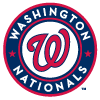 Juan Soto, OF, Nationals: Hot take: Juan Soto is a good hitter. Fine, that's not exactly news, but it might be news that he looks to be getting back to being the true top-tier bat he's supposed to be after a moderately disappointing first half. Of course, "disappointing" is an unfair word to apply to a .283/.407/.445 slash line, numbers nearly every hitter, especially a 22-year-old, would be thrilled to produce, but Soto was supposed to hit something well beyond that following a season in which he posted a ridiculous .351/.490/.695 slash line. While the young phenom's legendary plate discipline remained intact, he'd clearly lost some power, and a career-high 55 percent groundball rate was seemingly to blame. He joked prior to the Home Run Derby that the event could actually fix his swing, and it looks like that's been the case thus far. He's trimmed his groundball rate to 51.7 percent since the break and has already homered six times in nine games, helping him to a .394/.524/1.000 slash line. Soto is a player whom I ranked first overall heading into the season, and I expect him to play at close to that level in the second half, as the projection systems still generally have him in a tier with just Mike Trout and Vladimir Guerrero in terms of pure hitting talent even with a mildly disappointing first half.
Juan Soto, OF, Nationals: Hot take: Juan Soto is a good hitter. Fine, that's not exactly news, but it might be news that he looks to be getting back to being the true top-tier bat he's supposed to be after a moderately disappointing first half. Of course, "disappointing" is an unfair word to apply to a .283/.407/.445 slash line, numbers nearly every hitter, especially a 22-year-old, would be thrilled to produce, but Soto was supposed to hit something well beyond that following a season in which he posted a ridiculous .351/.490/.695 slash line. While the young phenom's legendary plate discipline remained intact, he'd clearly lost some power, and a career-high 55 percent groundball rate was seemingly to blame. He joked prior to the Home Run Derby that the event could actually fix his swing, and it looks like that's been the case thus far. He's trimmed his groundball rate to 51.7 percent since the break and has already homered six times in nine games, helping him to a .394/.524/1.000 slash line. Soto is a player whom I ranked first overall heading into the season, and I expect him to play at close to that level in the second half, as the projection systems still generally have him in a tier with just Mike Trout and Vladimir Guerrero in terms of pure hitting talent even with a mildly disappointing first half.
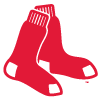 Eduardo Rodriguez, SP, Red Sox: Skepticism about Rodriguez seemed wise heading into the season, as he was seemingly hit harder by COVID-19 than any other player last year. His entire season was wiped out after he developed myocarditis, an inflammation of the heart muscle, as a result of the virus. It was unsafe for him to work out in any capacity, let alone play baseball. While he's thankfully since returned to full health, losing a full year in that manner seemed likely to have lingering effects. Those who faded him during draft season looked smart for most of the year thus far, as he struggled to a 6.07 ERA in his first 14 starts. A .380 BABIP drove much of those struggles, however, as he had a far better 3.65 FIP and 3.52 xFIP, striking out 26.8 percent of opposing batters while walking just 6.0 percent. Over his last five outings, his results have started to match the underlying numbers, as he owns a 2.66 ERA over that stretch despite his strikeout rate (29.5 percent) and walk rate (5.3 percent) changing only slightly in the right direction. There's seemingly every reason to believe the lefty will be his usual self down the stretch, given that he was never down nearly as much as he looked to be to begin with.
Eduardo Rodriguez, SP, Red Sox: Skepticism about Rodriguez seemed wise heading into the season, as he was seemingly hit harder by COVID-19 than any other player last year. His entire season was wiped out after he developed myocarditis, an inflammation of the heart muscle, as a result of the virus. It was unsafe for him to work out in any capacity, let alone play baseball. While he's thankfully since returned to full health, losing a full year in that manner seemed likely to have lingering effects. Those who faded him during draft season looked smart for most of the year thus far, as he struggled to a 6.07 ERA in his first 14 starts. A .380 BABIP drove much of those struggles, however, as he had a far better 3.65 FIP and 3.52 xFIP, striking out 26.8 percent of opposing batters while walking just 6.0 percent. Over his last five outings, his results have started to match the underlying numbers, as he owns a 2.66 ERA over that stretch despite his strikeout rate (29.5 percent) and walk rate (5.3 percent) changing only slightly in the right direction. There's seemingly every reason to believe the lefty will be his usual self down the stretch, given that he was never down nearly as much as he looked to be to begin with.
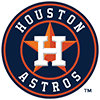 Kyle Tucker, OF, Astros: Tucker's surface stats are already good enough to count as a strong season, as no one can complain about a player on pace to hit .274 with 29 homers and 15 steals. If his underlying numbers are anything to go by, however, he could finish a fair bit above that level. His actual batting average comes in well below his .312 xBA, a number which ties Freddie Freeman for third among qualified hitters and slots in right in front of Guerrero and the aforementioned Soto. Similarly, his .514 slugging percentage trails his .581 xSLG (eighth-best among qualified hitters) by a significant margin. He's actually hit the ball quite hard all season, even if his numbers didn't always show it due to poor batted-ball luck. His 48.8 percent hard-hit rate through the end of May would be 25th-best among qualified hitters, but a .233 BABIP limited him to a .240/.310/.469. He's improved his hard-hit rate by a small amount to 50.5 percent since the start of June but has hit a far better .323/.359/.579 over that stretch thanks in large part to his BABIP jumping up to .346. The contact-quality numbers suggest Tucker is already a star, the sort of player who deserves contention in the back of the first round of fantasy drafts, so if his bad early-season batted-ball luck leads to your leaguemates undervaluing him, he's a player worth trading for.
Kyle Tucker, OF, Astros: Tucker's surface stats are already good enough to count as a strong season, as no one can complain about a player on pace to hit .274 with 29 homers and 15 steals. If his underlying numbers are anything to go by, however, he could finish a fair bit above that level. His actual batting average comes in well below his .312 xBA, a number which ties Freddie Freeman for third among qualified hitters and slots in right in front of Guerrero and the aforementioned Soto. Similarly, his .514 slugging percentage trails his .581 xSLG (eighth-best among qualified hitters) by a significant margin. He's actually hit the ball quite hard all season, even if his numbers didn't always show it due to poor batted-ball luck. His 48.8 percent hard-hit rate through the end of May would be 25th-best among qualified hitters, but a .233 BABIP limited him to a .240/.310/.469. He's improved his hard-hit rate by a small amount to 50.5 percent since the start of June but has hit a far better .323/.359/.579 over that stretch thanks in large part to his BABIP jumping up to .346. The contact-quality numbers suggest Tucker is already a star, the sort of player who deserves contention in the back of the first round of fantasy drafts, so if his bad early-season batted-ball luck leads to your leaguemates undervaluing him, he's a player worth trading for.
 Willy Adames, SS, Brewers: In most sports, talking about a "change of scenery" is little more than creating a storyline to fit our preconceived beliefs about a player. There's surely something there, as most of us can relate to working better in a work environment that better suits us, but it's awfully hard to quantify. That's not true in baseball, where we know how big of an effect park factors can have. Adames is Exhibit A of that phenomenon this season, as his move from pitcher-friendly Tropicana Field to hitter-friendly American Family Field has come with a big turnaround in his numbers. He posted just a 74 wRC+ in 41 games prior to the move but has more than doubled that mark to 149 in 56 games as a Brewer. Of course, that's a stat that factors in park differences, so there's clearly far more than merely park effects going on here. Adames struck out 35.9 percent of the time while walking at a 7.0 percent clip before the trade but owns a far better 25.0 percent strikeout rate and 13.4 percent walk rate since. Adames won't maintain his excellent .294/.388/.537 post-trade line the rest of the way, as it's far out of line with his career numbers, but he's been an above-average hitter for most of his career and no longer has to deal with the stress of counting the days until uber-prospect Wander Franco's arrival, so there's plenty of reason to believe he'll be a quality option from here on out.
Willy Adames, SS, Brewers: In most sports, talking about a "change of scenery" is little more than creating a storyline to fit our preconceived beliefs about a player. There's surely something there, as most of us can relate to working better in a work environment that better suits us, but it's awfully hard to quantify. That's not true in baseball, where we know how big of an effect park factors can have. Adames is Exhibit A of that phenomenon this season, as his move from pitcher-friendly Tropicana Field to hitter-friendly American Family Field has come with a big turnaround in his numbers. He posted just a 74 wRC+ in 41 games prior to the move but has more than doubled that mark to 149 in 56 games as a Brewer. Of course, that's a stat that factors in park differences, so there's clearly far more than merely park effects going on here. Adames struck out 35.9 percent of the time while walking at a 7.0 percent clip before the trade but owns a far better 25.0 percent strikeout rate and 13.4 percent walk rate since. Adames won't maintain his excellent .294/.388/.537 post-trade line the rest of the way, as it's far out of line with his career numbers, but he's been an above-average hitter for most of his career and no longer has to deal with the stress of counting the days until uber-prospect Wander Franco's arrival, so there's plenty of reason to believe he'll be a quality option from here on out.
 Logan Webb, SP, Giants: Webb entered the season with minimal fanfare, finishing with an NFBC average draft position of 570.1, but everything he's done thus far this year suggests he's the real deal. The lack of hype made sense, as the 2014 fourth-round pick didn't come up as much more than a fringe prospect and came into the year owning a 5.36 ERA in 94 innings at the highest level. He's still just 24 years old and is pitching for what appears to be one of the smartest organizations in baseball, however, so his big jump this season shouldn't come as a complete surprise. It's been quite a big one, though, as he owns a 3.54 ERA through 61 innings and an even better 3.32 FIP and 3.04 xFIP. The key for Webb has been an elite groundball rate, as his 60.6 percent mark trails only Framber Valdez among pitchers who have thrown at least 60 innings. When combined with an above-average 25.3 percent strikeout rate (the best mark among the top seven pitchers in groundball rate in that same sample), it sure looks as though Webb has a sustainable path to success. Workload is a potential concern, as Webb has thrown fewer than five in four of his 12 starts this season, but he's a good bet to provide strong numbers on a per-inning basis, especially with half his starts coming at the Giants' pitcher-friendly park.
Logan Webb, SP, Giants: Webb entered the season with minimal fanfare, finishing with an NFBC average draft position of 570.1, but everything he's done thus far this year suggests he's the real deal. The lack of hype made sense, as the 2014 fourth-round pick didn't come up as much more than a fringe prospect and came into the year owning a 5.36 ERA in 94 innings at the highest level. He's still just 24 years old and is pitching for what appears to be one of the smartest organizations in baseball, however, so his big jump this season shouldn't come as a complete surprise. It's been quite a big one, though, as he owns a 3.54 ERA through 61 innings and an even better 3.32 FIP and 3.04 xFIP. The key for Webb has been an elite groundball rate, as his 60.6 percent mark trails only Framber Valdez among pitchers who have thrown at least 60 innings. When combined with an above-average 25.3 percent strikeout rate (the best mark among the top seven pitchers in groundball rate in that same sample), it sure looks as though Webb has a sustainable path to success. Workload is a potential concern, as Webb has thrown fewer than five in four of his 12 starts this season, but he's a good bet to provide strong numbers on a per-inning basis, especially with half his starts coming at the Giants' pitcher-friendly park.
FALLERS
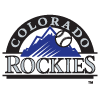 Trevor Story, SS, Rockies: Story hasn't exactly done his part to accelerate the Rockies' rebuild this season. Through the end of June, he'd deflated his trade value by hitting a modest .259/.332/.446, a line which translates to a sub-par 94 wRC+ once Coors Field is factored in. He's only gotten worse at the crucial moment, hitting just .179/.240/.343 thus far in July. It's possible he's damaged his trade value enough that the not famously competent Colorado front office elects to hold onto him through the deadline in favor of getting a compensatory draft pick when he leaves in free agency, which would be good for his fantasy value in the second half, but that seems unlikely. It's also possible that the impending trade is looming over his head and affecting his numbers, which could mean he rebounds down the stretch. Like many Rockies, however, he might not be as good as you think when no longer boosted by Coors Field. Even ignoring this season, his 114 wRC+ from his debut in 2016 through 2020 ranks a mere 79th among all hitters with at least 1,000 plate appearances over that stretch, tied with players who are decidedly not stars like Steve Pearce and Brian Anderson.
Trevor Story, SS, Rockies: Story hasn't exactly done his part to accelerate the Rockies' rebuild this season. Through the end of June, he'd deflated his trade value by hitting a modest .259/.332/.446, a line which translates to a sub-par 94 wRC+ once Coors Field is factored in. He's only gotten worse at the crucial moment, hitting just .179/.240/.343 thus far in July. It's possible he's damaged his trade value enough that the not famously competent Colorado front office elects to hold onto him through the deadline in favor of getting a compensatory draft pick when he leaves in free agency, which would be good for his fantasy value in the second half, but that seems unlikely. It's also possible that the impending trade is looming over his head and affecting his numbers, which could mean he rebounds down the stretch. Like many Rockies, however, he might not be as good as you think when no longer boosted by Coors Field. Even ignoring this season, his 114 wRC+ from his debut in 2016 through 2020 ranks a mere 79th among all hitters with at least 1,000 plate appearances over that stretch, tied with players who are decidedly not stars like Steve Pearce and Brian Anderson.
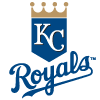 Whit Merrifield, 2B/OF, Royals: Merrifield is another player who could be affected by the stress of playing through trade rumors, as he's been linked with a move away from Kansas City for seemingly the millionth time. Whatever the reason, he's suddenly hit a wall at the plate, hitting just .188/.236/.219 over his last 16 games. His hard-hit rate has come in at just 20.0 percent over that stretch, while he's managed just a single barrel. He did still manage three steals over that stretch, extending his league-leading total to 25, but we could be reaching the point where Merrifield goes from being a solid all-around fantasy option who also runs a ton to a player who really doesn't offer much other than steals. Following his latest slump, he's hitting a modest .272/.319/.402 on the season, good for a 95 wRC+, his first below-average mark in that category since his rookie season back in 2016. That doesn't appear to be a fluke, as his xBA (.257) and xSLG (.377) both come in even worse than his actual numbers, and both represent his lowest marks since that same year. He makes some of the lightest contact in the league, with his 28.1 percent hard-hit rate ranking fifth-worst among qualified hitters, and while he does enough to make up for that for now, he's standing at the edge of a rather worrisome cliff.
Whit Merrifield, 2B/OF, Royals: Merrifield is another player who could be affected by the stress of playing through trade rumors, as he's been linked with a move away from Kansas City for seemingly the millionth time. Whatever the reason, he's suddenly hit a wall at the plate, hitting just .188/.236/.219 over his last 16 games. His hard-hit rate has come in at just 20.0 percent over that stretch, while he's managed just a single barrel. He did still manage three steals over that stretch, extending his league-leading total to 25, but we could be reaching the point where Merrifield goes from being a solid all-around fantasy option who also runs a ton to a player who really doesn't offer much other than steals. Following his latest slump, he's hitting a modest .272/.319/.402 on the season, good for a 95 wRC+, his first below-average mark in that category since his rookie season back in 2016. That doesn't appear to be a fluke, as his xBA (.257) and xSLG (.377) both come in even worse than his actual numbers, and both represent his lowest marks since that same year. He makes some of the lightest contact in the league, with his 28.1 percent hard-hit rate ranking fifth-worst among qualified hitters, and while he does enough to make up for that for now, he's standing at the edge of a rather worrisome cliff.
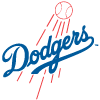 Julio Urias, SP, Dodgers: Urias was finally unleashed as a full-time starter this season, and the results have been for the most part excellent. Through the end of June, he rode an excellent combination of a 28.4 percent strikeout rate and 4.8 percent walk rate to a 3.95 ERA and a significantly better 3.35 xFIP. His four July starts paint a more worrisome picture, however, even if that hasn't shown up in his ERA, which sits at 2.45 for the month. His 4.66 xFIP in those four outings gives a better idea of the quality of his performances, as he relied on a .225 BABIP to get to that strong ERA, with his strikeout rate collapsing to 19.4 percent and his walk rate rising two ticks to 6.8 percent. This is still a small sample of reduced performance from Urias, and if you judge purely based on ERA, he doesn't count as a faller at all, but the lefty's impending workload concerns suggest that this may be merely the start of what could be a considerable dropoff in the second half. Urias has already thrown 119 innings this far, well above the 78 he tossed between the regular season and playoffs last year. His career-high as a professional is just 127.2 frames, and that came all the way back in 2016.
Julio Urias, SP, Dodgers: Urias was finally unleashed as a full-time starter this season, and the results have been for the most part excellent. Through the end of June, he rode an excellent combination of a 28.4 percent strikeout rate and 4.8 percent walk rate to a 3.95 ERA and a significantly better 3.35 xFIP. His four July starts paint a more worrisome picture, however, even if that hasn't shown up in his ERA, which sits at 2.45 for the month. His 4.66 xFIP in those four outings gives a better idea of the quality of his performances, as he relied on a .225 BABIP to get to that strong ERA, with his strikeout rate collapsing to 19.4 percent and his walk rate rising two ticks to 6.8 percent. This is still a small sample of reduced performance from Urias, and if you judge purely based on ERA, he doesn't count as a faller at all, but the lefty's impending workload concerns suggest that this may be merely the start of what could be a considerable dropoff in the second half. Urias has already thrown 119 innings this far, well above the 78 he tossed between the regular season and playoffs last year. His career-high as a professional is just 127.2 frames, and that came all the way back in 2016.


